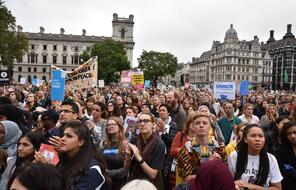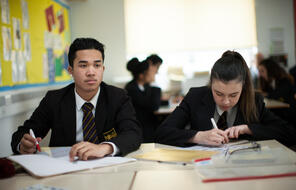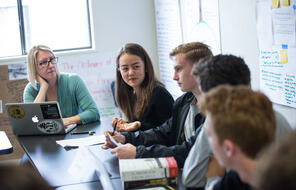Reading
Democracy and Community
Students brainstorm different definitions of democracy and consider democracy's relationship to their own communities and cultures.
At a Glance
Language
English — USSubject
- Civics & Citizenship
- Democracy & Civic Engagement
From A City Year 1 by Suzanne Goldsmith:
Communities are not built of friends, or of groups of people with similar styles and tastes, or even of people who like and understand each other. They are built of people who feel they are part of something that is bigger than themselves: a shared goal or enterprise, like righting a wrong, or building a road, or raising children, or living honorably, or worshipping a god. To build community requires only the ability to see value in others; to look at them and see a potential partner in one’s enterprise.
Connecting Questions
- How does Suzanne Goldsmith define community? What are some communities that you are a member of?
- Are the ideas of community and democracy related?
- Is community possible without democracy? Is democracy possible without community?
- Often, images reveal more about a complex idea than a definition that relies only on words does. What would a picture of a community look like? What might an image of democracy look like? How are they similar? How are they different?
- 1 Suzanne Goldsmith, A City Year (New Press, 1993), 277.
How to Cite This Reading
Facing History & Ourselves, "Democracy and Community," last updated October 10, 2017.
This reading contains text not authored by Facing History & Ourselves. See footnotes for source information.
The resources I’m getting from my colleagues through Facing History have been just invaluable.
—
Claudia Bautista, Santa Monica, Calif













